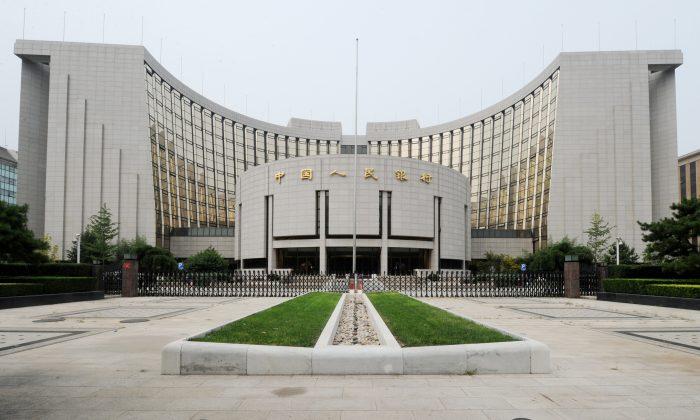BEIJING—New bank loans in China fell more than expected to the lowest in 22 months in October, but the drop was likely due to sluggish domestic demand and policymakers are still expected to ramp up support for the cooling economy in coming months.
Chinese regulators have been trying to boost bank lending and lower financing costs for over a year, especially for smaller and private companies which generate a sizable share of the country’s economic growth and jobs.
But domestic demand remains sluggish as investment and consumption weakens, while escalating U.S.-China trade tensions weigh on exports, suggesting more policy stimulus is needed.
“We think the central bank will need to loosen policy more aggressively in the coming months in order to drive a turnaround in credit growth and prevent economic activity from slowing too abruptly,” Julian Evans-Pritchard at Capital Economics said in a note.
Chinese banks extended 661.3 billion yuan ($94.55 billion) in new yuan loans in October—the weakest since December 2017, data from the central bank showed on Nov. 11, down sharply from September and falling short of analyst expectations.
Analysts polled by Reuters had predicted new yuan loans would fall to 800 billion yuan in October, down from 1.69 trillion yuan in September.
Household loans, mostly mortgages, fell to 421 billion yuan in October from 755 billion yuan in September, while corporate loans dipped to 126.2 billion yuan from 1.01 trillion yuan.
“The data reflects weaker demand for credit from companies as their confidence has been affected by the trade war,” said Nie Wen, a Shanghai-based economist at Hwabao Trust.
Broad M2 money supply in October grew 8.4 percent from a year earlier, central bank data showed on Nov. 11, matching estimates of a forecast in the Reuters poll. It rose 8.4 percent in September.
Room for Easing Seen Limited
Growth of outstanding total social financing (TSF), a broad measure of credit and liquidity in the economy, slowed to 10.7 percent in October from a year earlier and from 10.8 percent in September.TSF includes off-balance sheet forms of financing that exist outside the conventional bank lending system, such as initial public offerings, loans from trust companies and bond sales.
In October, new TSF tumbled to 618.9 billion yuan—the lowest since July 2016—from 2.27 trillion yuan in September. Analysts polled by Reuters had expected 1 trillion yuan.
The central bank is expected to maintain its policy easing to support growth, but room for further action could be limited by worries about debt and housing risks, as surging food costs push up consumer inflation, analysts said.
“The room for easing could be limited by factors including inflation, which could have some negative impact on the economy,” Nie said.
Data on Saturday showed China’s producer prices fell the most in more than three years in October, while consumer inflation soared to the highest in nearly 8 years.
To support growth, the central bank has cut bank reserves seven times since early 2018 to spur lending—alongside modest lending rate cuts, while local governments have stepped up debt issuance to accelerate infrastructure spending.
Last month, the central bank cut the interest rate on its medium-term lending facility (MLF) for the first time since early 2016.
China’s finance minister has said that local governments were on track to complete bond issuance within the 2.15 trillion yuan annual quota by the end of September.
The statistics bureau said last month that China would front-load some 2020 special local government bond issuance to this year.
China’s economic growth slowed a near 30-year low of 6.0 percent in the third quarter. Growth is expected to cool to 6.2 percent in the whole of 2019 and then hit 5.9 percent in 2020, according to a Reuters poll.






Friends Read Free